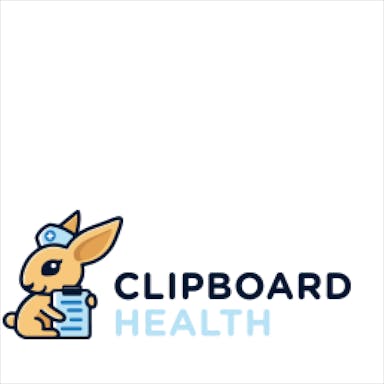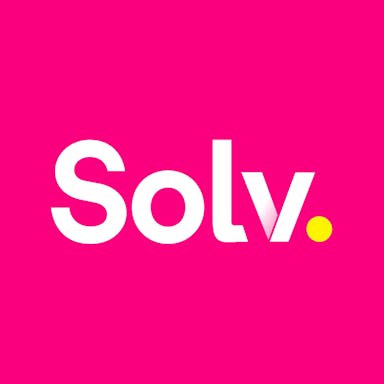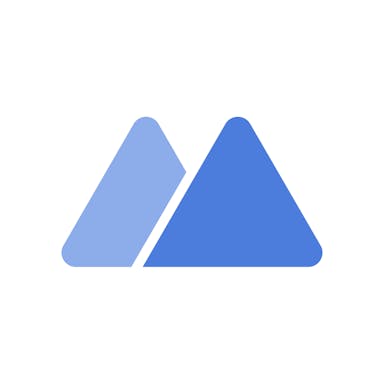Thesis
Understaffed healthcare facilities have become a long-term challenge for patients and providers across the US and is driven by several factors. Doctors and nurses are retiring faster than they can be replaced, while the aging population — projected to increase by 47% from 2022 to 2050 — requires more care, with those aged 65 and older visiting physicians two to three times more often than younger age groups. Additionally, as of over 42% of Americans have two or more chronic diseases, further increasing demand for healthcare services. In January 2022, more than 19% of hospitals were critically understaffed. Furthermore, between 2019 and 2021, US hospitals faced over $24 billion in losses due to understaffing and supply chain inefficiencies. Larger hospitals, already operating on tight margins, have faced additional strain as rural hospitals shutter at increasing rates, forcing them to absorb growing patient populations.
This overflow of patients, combined with widespread staffing shortages, has amplified employee burnout. In 2022, 46% of health workers reported often feeling burned out. A survey conducted in spring 2023 highlighted that approximately 33% of healthcare workers planned to leave their positions and 14% planned to leave the healthcare field altogether. The long hours, stressful work environment, and high patient volume create high burnout levels for healthcare professionals, contributing to high turnover rates and making staffing shortages a chronic issue. In 2024, healthcare professionals considered a facility’s staff-to-patient ratio one of their top factors when evaluating job opportunities.
The negative effects of staffing shortages extend downstream, ultimately impacting patient outcomes. A 2024 study found that a 10% increase in nurses’ intention to quit their jobs is associated with a 14% increase in patient mortality. The growing elderly population and rising prevalence of multiple chronic conditions have made treatment plans more resource-intensive, requiring coordinated, specialized care. The shortage of specialists has made it difficult to address these complex needs effectively, further straining the healthcare system. As a result, US patients have experienced worse health outcomes since the COVID-19 pandemic.
Clipboard Health aims to address healthcare staff shortages with a two-sided marketplace connecting healthcare professionals with understaffed facilities. Healthcare professionals can browse open shifts posted by facilities based on location, pay rate, and timing to find the best match for their needs. This flexibility allows them to work on their own schedules and take time off, which can help curb burnout. As of January 2025, the platform served tens of thousands of healthcare professionals and collaborated with over 1K healthcare facilities.
Founding Story
Clipboard Health was founded in 2016 by Wei Deng (CEO). Deng graduated from Yale University with her Bachelor’s degree in 2005 and received a JD from Yale Law School in 2008. After graduating from law school, Deng worked as an associate at Davis Polk & Wardwell LLP from 2008 to 2010 and Moelis & Company from 2010 to 2011 before transitioning to the startup ecosystem.
In 2015, Deng joined Sendwave, an app-based remittance company that aimed to facilitate affordable money transfers from Europe and North America to Africa, Asia, and South America. As Sendwave’s second non-engineering hire, Deng focused on product management and business operations until April 2016, when she left to build a business that aligned with her life’s mission — “helping people climb the socioeconomic ladder”. In May 2016, she founded Talent Capital, the precursor to Clipboard Health. Talent Capital set out to provide working professionals with income-share agreements, funding their education in return for a percentage of their future earnings. To test her idea, she analyzed labor data and conducted interviews with professionals in the largest occupations, like nursing and truck driving. Yet, many of her interviewees dismissed the idea, seeing it as a “scam.”
Despite the pushback, Deng uncovered a critical insight from nurses: many were struggling to find job opportunities that matched their needs and schedules. The initial concept of Talent Capital failed to take off, with over 50 investors turning her down, so Deng made a strategic pivot. She narrowed her focus to the nursing profession, particularly responding to the difficulty many nursing graduates experienced securing jobs post-graduation. Despite a nationwide nursing shortage, about half of nursing new grads couldn’t find jobs.
In 2017, Deng fleshed out the initial idea for Clipboard Health, a fellowship program for nurses, and was accepted into Y Combinator’s winter 2017 batch. The fellowship was designed to equip nurses with interview skills and clinical training opportunities to help them secure their first jobs. Over time, this concept transformed into a job board that aggregated nursing positions from different websites and categorized them by criteria like shift timings, which were particularly important to nurses.
To generate revenue, Deng modeled the business after other job boards, asking employers to pay for access to the platform. Many of these paying customers turned out to be staffing agencies who needed help filling shifts for healthcare facilities. To fill these shifts, Deng manually screened candidates and connected them with staffing agencies. This process was inefficient, and Clipboard Health found itself making only $300 per month while overspending on recruiting costs. Scheduling conflicts between nurses and agencies further complicated the issue, revealing a root problem — agencies needed nurses who were both qualified and available to work at specific times.
Recognizing this challenge, Deng pivoted again. Instead of selling to staffing agencies, she began working directly with healthcare facilities to match them with available nurses. Following what Deng described as “six to eight pivots,” Clipboard Health then reintroduced itself as a two-sided marketplace, enabling facilities to efficiently find nurses based on both qualifications and availability.
Since its inception, Clipboard Health has expanded its leadership team to include Deng’s husband, Bo Lu, as Co-CEO, Zack Ganieany as VP of Finance, Hannah Kim as Chief of Staff, Jefferson Griscavage as Head of Worker Operations, and George Markoulakis as Head of Product.
Product
Clipboard Health is a staffing solution that connects healthcare professionals with facilities in need of qualified workers. The platform supports a range of professionals, including certified nursing assistants, registered nurses, medical assistants, phlebotomists, licensed practical nurses, nurse practitioners, caregivers, operating room nurses, cooks, and janitors.
For Healthcare Professionals
To use Clipboard Health, healthcare professionals can start by downloading the Clipboard Health app and entering their license number, expiration date, and preferred shift types. Once their account is set up, they gain access to a range of shifts that can be filtered by timing and distance. Shifts are categorized into three slots: AM (7:00 AM-2:00 PM), PM (3:00 PM-11:30 PM), and NOC (11:00 PM-7:00 AM).
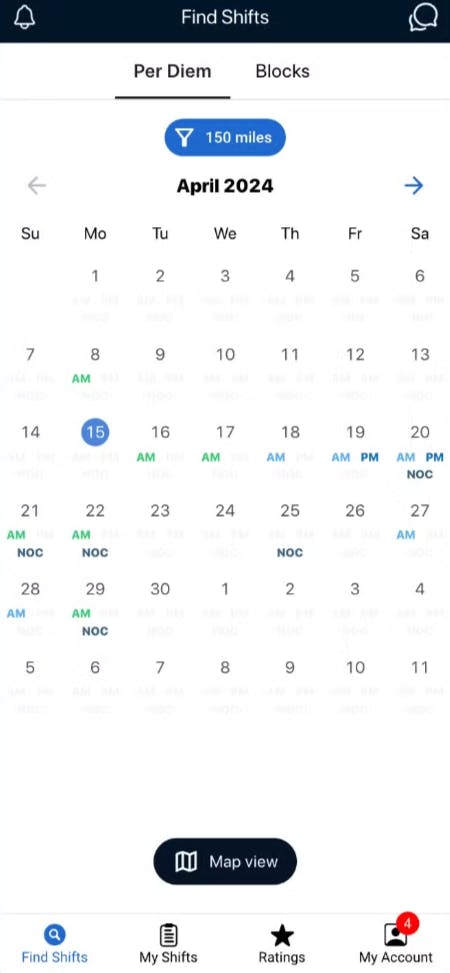
Source: Clipboard Health
Clipboard Health uses an attendance scoring system to manage healthcare professionals’ access to shifts. Depending on the geographic region, Clipboard Health applies either the Attendance Score or the Clipboard Score.
The Attendance Score system assigns each professional an initial score of 100 points, which can increase or decrease based on factors such as punctuality and shift completion rates. A low score can restrict access to shifts, while high-scoring professionals, particularly those designated as facility “favorites,” receive priority access. The maximum score in this system is capped at 100 points.
As of January 2025, the Clipboard Score system is being piloted in Provo, Salt Lake City, Seattle, Portland-Vancouver, and Salem. The Clipboard Score is similar to the Attendance Score but includes stricter penalties for cancellations, lateness, and no-shows. Unlike the Attendance Score, it removes the cap on the maximum number of points professionals can accumulate.
For both the Attendance Score and Clipboard store systems, professionals with restricted accounts can still receive direct invites from facilities to fill shifts.
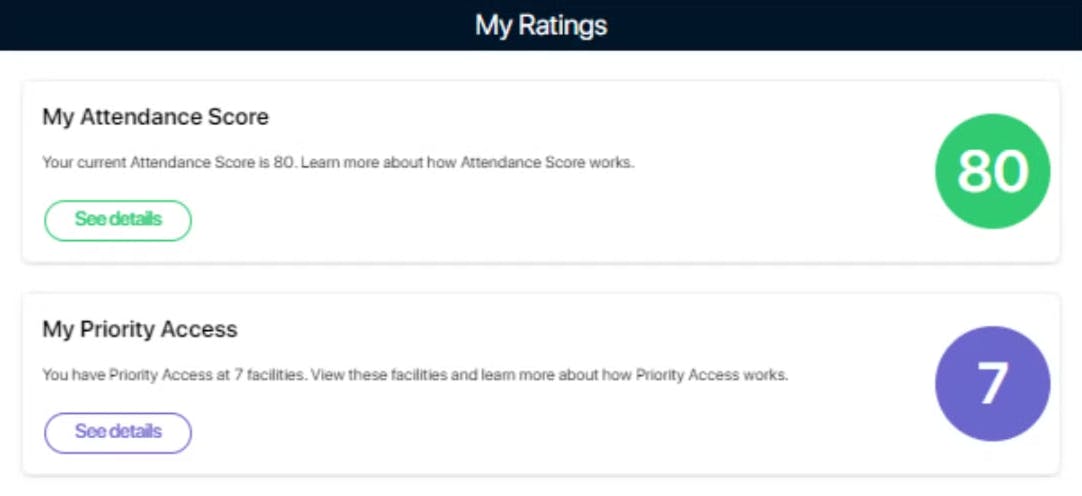
Source: Clipboard Health
The average user starts booking shifts within seven days of signing up, and nearly 30% secure their first shift within 24 hours. The platform’s Digital Timesheets feature allows healthcare workers to clock in and out to improve time tracking accuracy and management for healthcare facilities. Clipboard Health’s InstantPay feature also ensures that professionals are paid immediately after completing a shift, eliminating payment delays. For those who can fill immediate needs, the platform offers Urgent Shifts — premium, last-minute opportunities that pay higher rates. Furthermore, facilities can hire healthcare professionals as full-time employees without paying extra fees to Clipboard Health.
In addition to quick onboarding and payment processing, Clipboard Health offers healthcare professionals greater control over their working conditions. They can propose alternative pay rates and shift times, and even work with their friends by booking shifts together. To promote a positive work environment, professionals can report safety incidents. Before December 2024, healthcare professionals could request to be added to a facility’s “Do Not Return” list, allowing them to avoid workplaces where they had negative experiences. However, this feature has since been discontinued. Instead, professionals are now encouraged to leave reviews for facilities after completing their shifts, enabling future workers to make more informed decisions about their workplace choices.
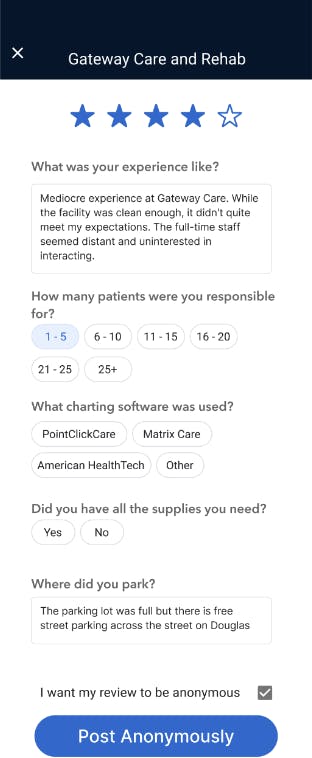
Source: Clipboard Health
Overall, Clipboard Health professionals are well-received, with 83% receiving ratings of 4 stars or higher from facilities. Clipboard Health regularly posts promotions to incentivize healthcare professionals to stay active on the platform. These may include financial bonuses for completing a certain number of shifts within a given timeframe (e.g. a $100 bonus for working five shifts within two weeks).
For Healthcare Facilities
Once healthcare administrators sign up, they can access the platform and post shifts, even just hours before a shift’s start time. This setup process is standardized across care settings, including assisted living, home health, and pharmacy services. To streamline the user experience, the platform includes an AI virtual assistant to handle technical and administrative issues. Clipboard Health’s Block Booking feature also allows facilities to assign professionals to multiple shifts at once, making the scheduling process more efficient.
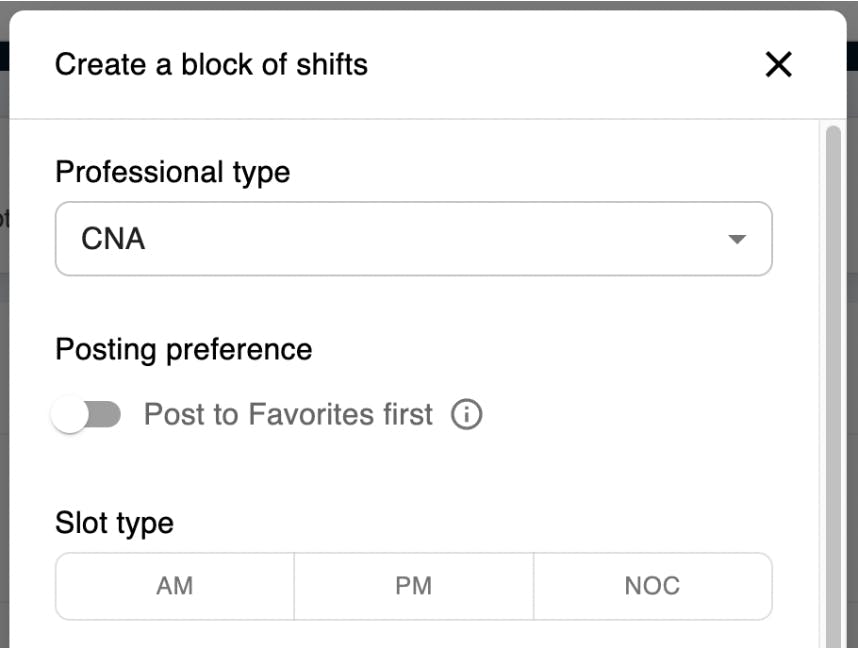
Source: Clipboard Health
In May 2022, Clipboard Health launched a mobile app for healthcare facilities. The app allows facilities to post shifts, communicate directly with healthcare professionals, and review timesheets, simplifying daily operations. Since its introduction, adoption and usage of the app among facilities have gradually climbed.
Facilities can customize shift calendars to prioritize the types of professionals they need most and can switch between dedicated calendars for booking different healthcare roles. The Magic Shifts feature helps facilities fill urgent shifts, offering a $100 invoice credit if a shift remains unfilled. Magic Shifts has proven highly effective, with a success rate of over 99% in filling high-priority shifts.

Source: Clipboard Health
Clipboard Health’s Shift Invites feature enables facilities to directly invite specific professionals to fill shifts, helping them retain talent and build consistent teams. When a facility chooses a healthcare professional to fill a shift and the professional confirms, the facility can view their estimated time of arrival up to an hour before they arrive on-site. If any questions arise or miscommunication occurs, the facility can use an in-platform chat feature to message the healthcare professional directly.
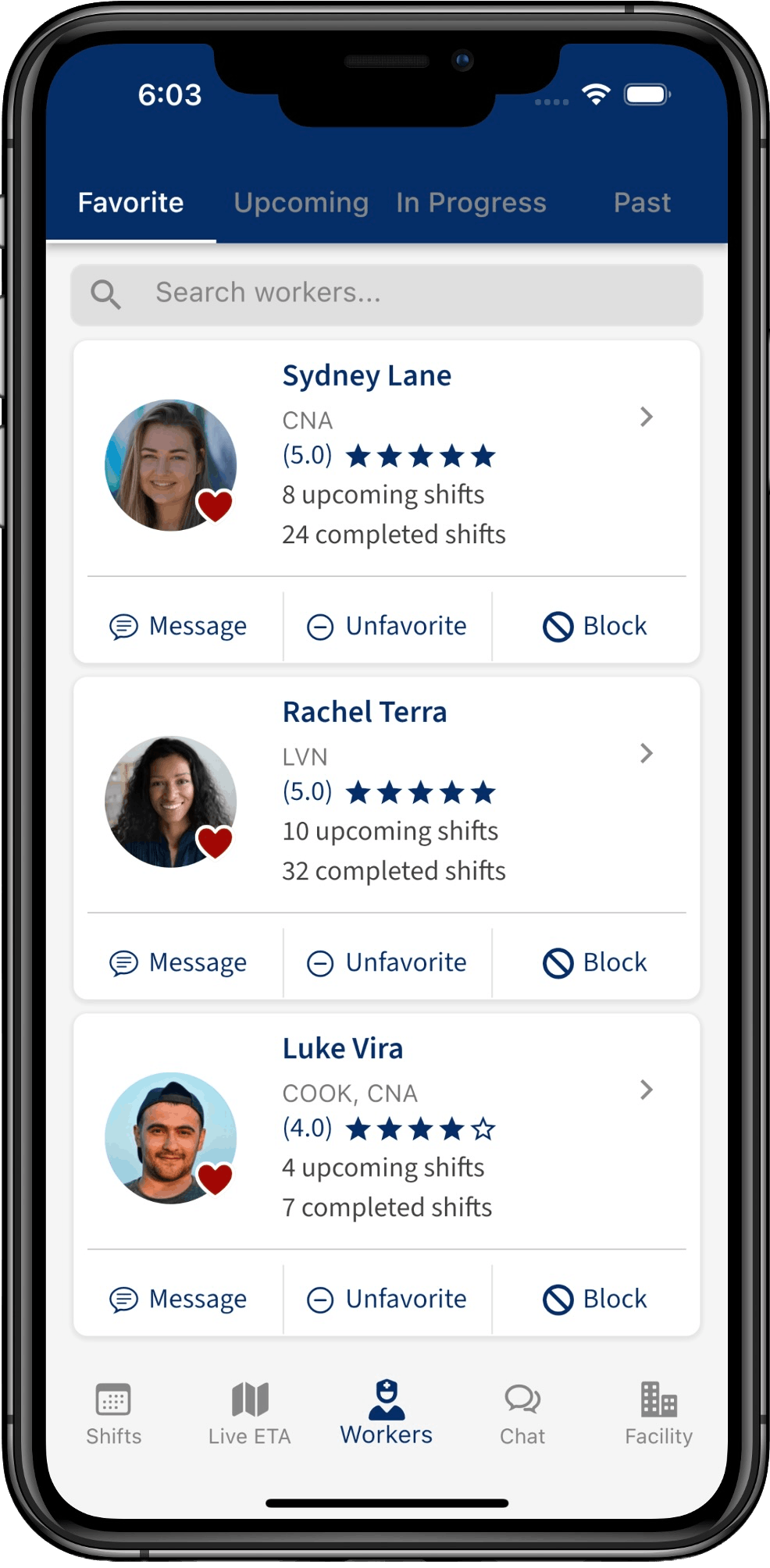
Source: Clipboard Health
In the case of billing discrepancies, facilities can submit disputes directly through the Clipboard Health portal. Facilities can also add workers to their “Do Not Return” list, preventing them from booking future shifts at their location.
Market
Customer
Clipboard Health has historically focused on serving two groups in healthcare staffing: healthcare facilities (often long-term care facilities) and healthcare professionals (typically nurses with fewer years of formal schooling).
Healthcare Facilities
Facilities like nursing homes, rehabilitation centers, and hospices frequently struggle to maintain consistent staffing. In fact, 87% of nursing homes face significant staffing shortages, and only 2% can easily hire new staff, largely due to a lackof interested or qualified candidates.
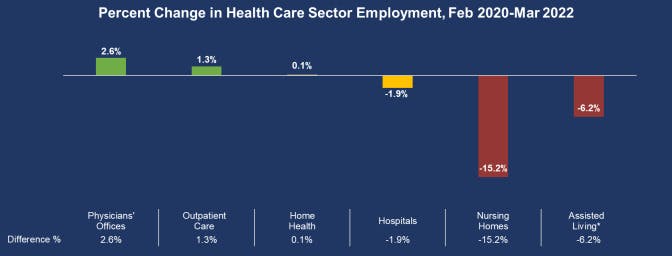
Source: PubMed
Quickly filling shifts is crucial for healthcare facilities. To address this need, Clipboard Health has focused on improving time-dependent metrics, such as the number of shifts booked within 15 minutes, boosting facilities’ confidence in the platform. While the total number of shifts per facility remains relatively stable, faster fill times lead to more reliable staffing — a key advantage for facilities dealing with last-minute vacancies.
Clipboard Health has helped facilities book shifts faster and manage “No Call No Show” incidents more effectively, leading to a reduction in facility churn. The graph below illustrates the percentage of healthcare facilities that have churned over time, demonstrating a downward trend.

Source: Open Org
Healthcare Professionals
Similarly, healthcare professionals with less formal education, such as certified nursing assistants, find it challenging to secure well-paying jobs with career advancement. For these professionals, who are often required to work overtime during irregular hours, having control over scheduling is a top priority.

Source: Open Org
As Clipboard Health’s network of healthcare professionals has expanded, more users have transitioned from passive members to active shift-bookers. The platform has also experienced a decline in “no call no show” incidents, while the number of reliable, high-performing professionals — known as “good actors” — continues to grow. Rising referral rates among healthcare professionals further emphasize how the platform’s positive user experience drives ongoing growth.
Market Size
Clipboard Health operates within the healthcare staffing market, connecting healthcare professionals, like nurses, with facilities like nursing homes.
In 2024, the healthcare staffing market was valued at $26.3 billion and was projected to reach a market size of $43.4 billion by 2033. The market’s expansion is driven by mounting demand for temporary employment and flexible work schedules. Nursing roles, such as per diem and travel nursing, are particularly driving this trend, accounting for nearly one-third of the healthcare staffing market’s revenue.
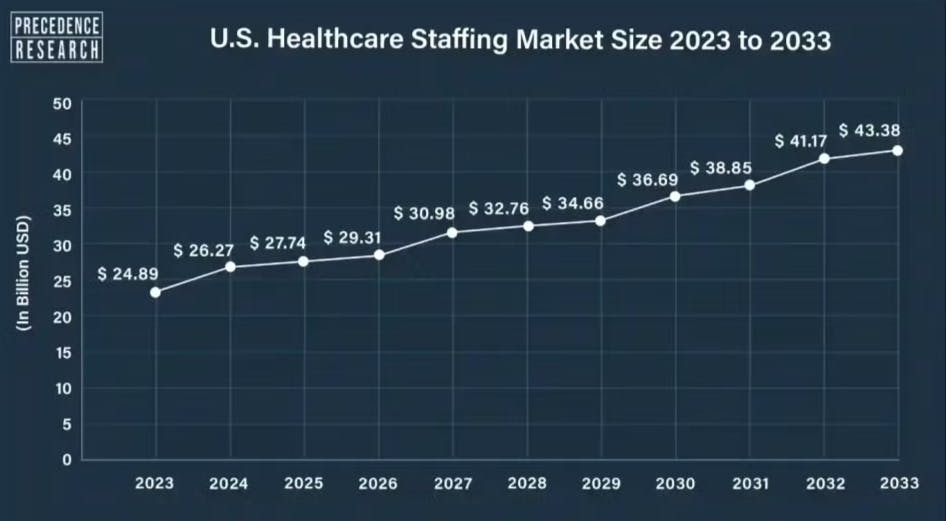
Source: Precedence Research
The healthcare staffing market is also benefiting from a projected 36% increase in the number of full-time registered nurses by 2035 compared to 2022. This growth could gradually ease the ongoing nursing shortage, with the workforce expected to experience approximately 193.1K vacancies annually from 2024 to 2032. Additionally, demand for nurse practitioners is expected to grow by 45% by 2032, driven by an aging population and shortage of primary health care workers.
Competition
ShiftKey: Founded in 2016, ShiftKey connects healthcare professionals, especially nurses, with facilities that need shift coverage. On Clipboard Health, facilities typically set healthcare professionals’ shift rates up front, while ShiftKey lets professionals bid on shifts. While Clipboard Health offers a rate negotiation feature, this option is not available for all facilities. In January 2023, ShiftKey raised $300 million in a Series A round led by Lorient Capital, bringing its valuation to over $2 billion.
ShiftMed: Launched in 2019, ShiftMed is a healthcare workforce solution that connects professionals with open shifts at clinical facilities in real-time. In February 2023, the company secured $200 million in a Series D round led by Panoramic Ventures, bringing its total funding to $298 million, as of January 2025. ShiftMed, like Clipboard Health, focuses on per-diem shifts but also offers more robust scheduling and workforce management tools. Healthcare professionals on ShiftMed’s platform are classified as W-2 employees, while those on Clipboard Health are 1099 contractors.
Nomad Health: Established in 2015, Nomad Health is an online marketplace that matches healthcare professionals with job opportunities at medical facilities. By enabling professionals to search, filter, and apply directly to positions, the platform aims to replace traditional staffing agencies. As of January 2025, Nomad Health served over 300K clinicians.
In June 2024, Nomad Health raised $22 million in a Series D round led by HealthQuest Capital and Adams Street Partners, bringing its total funding to $241 million, as of January 2025. Other notable investors include Polaris Partners, Icon Ventures, and .406 Ventures. While Clipboard Health primarily targets shorter-term and regional staffing needs, Nomad Health specializes in longer-term travel contracts that can last around 13 weeks, catering to step-down travel nurses who may need to work out of state. Unlike Clipboard Health, Nomad Health includes a marketplace for telehealth roles.
Trusted Health: Founded in 2017, Trusted Health is a career platform for travel nurses and allied health professionals that aggregates job opportunities alongside professional development resources. In November 2021, the company raised $94 million in a Series C funding round led by Greenspring Associates and Craft Ventures, bringing its total funding to approximately $174.8 million as of January 2025.
Trusted Health is differentiated from Clipboard Health through its focus on community-building. Its community, known as “The Trusted Circle,” offers virtual and in-person events, an ambassador program, a community forum, and a library of tools and resources to help healthcare professionals feel more connected. Clipboard Health's community-building feature, “Work With Friends,” is limited to fostering connections during shifts rather than offline.
connectRN: Launched in 2014, connectRN connects nurses and certified nursing assistants with flexible job opportunities in hospitals and home care settings. The company raised $76 million from a financing round in December 2021 led by Suvretta Capital Management and Avidity Partners, bringing its total funding to $161.3 million as of January 2025. Clipboard Health serves a broader range of healthcare professionals, while connectRN specifically targets nurses and focuses on home care and concierge nursing services. Additionally, healthcare professionals working with connectRN are classified as W-2 employees.
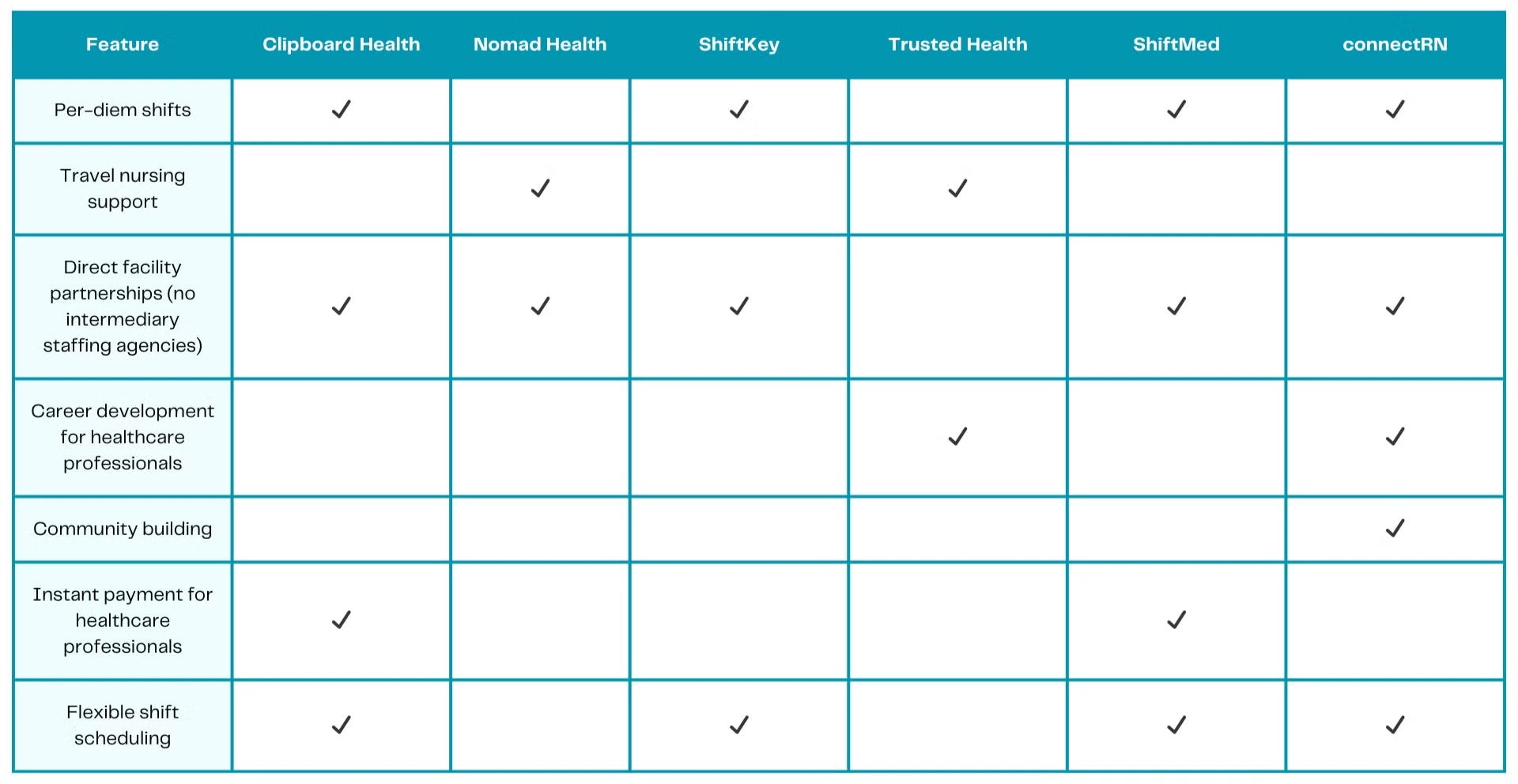
Source: Contrary Research
Business Model
Clipboard Health generates revenue by taking a percentage of the wages paid to healthcare professionals, who are classified as independent contractors. The exact percentage varies by facility, with the terms agreed upon through individual contract arrangements.
Facilities can opt for premium services, such as access to a larger pool of professionals and advanced scheduling tools, for an additional fee. Depending on their staffing needs and budget, facilities can choose from various subscription plans. Discounts are available for facilities that commit to a set number of shifts or long-term contracts.
This business model aligns with industry standards for healthcare staffing companies, which typically charge a percentage of the employee's pay.
The platform is accessible to healthcare professionals with no minimum booking requirements or additional fees. Furthermore, facilities incur no hiring fees if they transition professionals from the platform to full-time roles.
Costs
Examining public competitors, such as AMN Healthcare, provides insight into the general types of costs that healthcare staffing companies endure. AMN’s Q3 2024 10-Q SEC filing reported that its primary operating expenses included compensation, benefits, housing, travel, and allowances for healthcare professionals, which account for 69% of the cost of revenue. Selling, general, and administrative (SG&A) costs accounted for 21.8% of the cost of revenue and included compensation and benefits for corporate employees, professional service fees, legal matter accruals, and other overhead costs.
Clipboard Health likely faces similar SG&A costs, but may not incur compensation, benefits, housing, or travel costs for healthcare professionals as it primarily staffs healthcare facilities with local independent contractors. Furthermore, since its founding, Clipboard Health has operated remotely, reducing operational costs and supporting sustainable business growth.
Traction
As of January 2025, Clipboard Health had a team of over 550 members across more than 40 countries. From January 2021 to January 2025, the company grew 20-fold. It has seen over 50% year-over-year growth in the number of active healthcare professionals on its platform, more than 30% year-over-year growth in the number of healthcare facilities, and greater than 50% increase in shift postings. As of April 2022, Clipboard Health has partnered with facilities in over 30 cities nationwide and has served more than 600K healthcare professionals on its platform.
Clipboard Health reached $100 million in annual revenue within three years and has been profitable since 2022. As of January 2025, the platform served tens of thousands of healthcare professionals and collaborated with over 1K healthcare facilities. Clipboard Health has also achieved a shift-fill reliability rate of over 90%, as of January 2025, compared to the industry average of 60%.
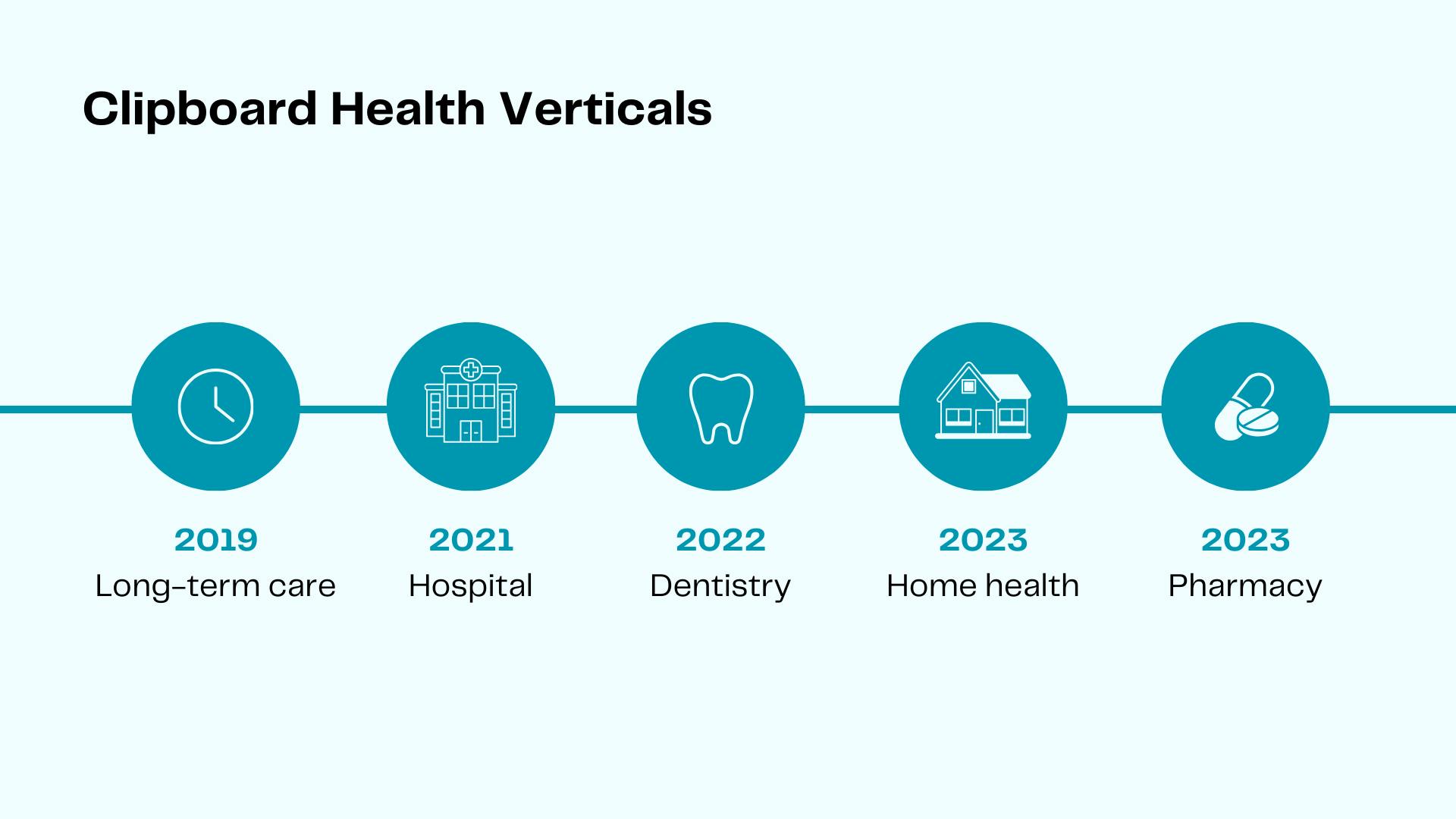
Source: Contrary Research
As of October 2024, Clipboard Health was hiring for a New Verticals Launcher role, signaling its intent to expand its shift-placement model to additional sectors One new market and use case it has identified is addressing staffing shortages in educational settings. The company has launched an affiliate of Clipboard Health called Clipboard Education, connecting schools with substitute teachers. Clipboard Education has the same core features as its healthcare counterpart, such as live ETA tracking and InstantPay. In addition to educational professionals, Clipboard Health is capitalizing on opportunities to assist other school staff — from bus drivers to custodians to counselors — by giving them access to more flexible employment options.
Valuation
In February 2022, Clipboard Health raised $30 million in a Series C round led by Sequoia Capital, bringing its total funding to $94.1 million as of January 2025. This followed a $50 million Series B round led by IVP in June 2021. Notable investors beyond Sequoia Capital and IVP include Caffeinated Capital, Initialized Capital, Michael Seibel of Y Combinator, Tony Xu of DoorDash, Emmett Shear of Twitch, as well as SciFi VC, MasterClass CEO David Rogier, and angel investors Gokul Rajaram and Elad Gil.
After its Series C, Clipboard Health said it planned to use the new capital to expand its operations. The company aimed to double its engineering team and improve its sales and marketing efforts. The healthcare staffing industry, within which Clipboard Health operates, has seen increasing investment and activity in mergers and acquisitions. Companies like Nomad Health and IntelyCare secured additional funding between 2022 and 2024, highlighting the growth potential of the healthcare staffing sector.
Key Opportunities
Expansion Into Rural Healthcare Staffing
Clipboard Health could expand its market share by expanding its services into rural healthcare settings, where a critical staffing gap persists. Rural hospitals and healthcare facilities frequently struggle to recruit and retain healthcare professionals. Despite 20% of the US population living in rural areas, as of July 2021, only 11% of physicians served these communities, as of July 2024. In 2023, an estimated 65% of rural areas lacked sufficient primary care providers to meet their needs.
The situation is exacerbated by the closure of rural hospitals — over 100 have shuttered in the late 2010s and early 2020s, many converting to emergency centers due to staff shortages and financial constraints. Clipboard Health’s platform, designed to match healthcare professionals with available shifts, could be adapted to include features tailored to rural healthcare needs.
Features like travel stipends or bonuses for professionals willing to take rural assignments could make these positions more appealing. Additionally, with 73% of rural residents having used telehealth by 2022, there is an opportunity for further innovation. By integrating telehealth into its platform, Clipboard Health could pilot a hybrid staffing model that blends on-site and remote care, enabling more robust coverage for rural healthcare facilities.
Further Expansion Beyond Healthcare
A gig workforce could be especially valuable not only in education but also in construction and manufacturing, where understaffing has been a common challenge. For example, the manufacturing sector was projected in 2021 to face a shortage of 2.1 million jobs by 2030, with 622K open positions as of January 2024. If these gaps remain unfilled, they could cost the industry up to $1 trillion in 2023 alone. Similarly, the retail industry is predicted to need at least 1 million additional workers to meet demand and Amazon expects to exhaust its available hiring pool for warehouse roles in 2024.
Clipboard Health could leverage existing data analytics gained through scaling Clipboard Health and Clipboard Education to optimize worker-job matches in new sectors and expand across new verticals more quickly.
Integration of Predictive Staffing
Clipboard Health has the opportunity to leverage AI/ML to create predictive staffing models, strengthening its value proposition for healthcare facilities. The healthcare sector is increasingly embracing AI/ML, with the global healthcare AI market projected in January 2024 to reach $188 billion by 2030. This trend is reflected in the rising use of automation software for healthcare workforce management, where AI-enabled administrative tools have demonstrated the ability to cut nurse overtime by up to 30% and boost staff satisfaction.
Clipboard Health could capitalize on these trends by integrating AI/ML into its platform, helping it forecast staffing requirements based on historical data, patient acuity, and other critical factors. Given the company’s extensive data on shift patterns, facility needs, and healthcare professional preferences, it could also sell predictive insights that help facilities lower overtime costs and enhance patient care outcomes.
Development of Specialized Training/Certification Programs
Clipboard Health could also capitalize on the increasing demand for specialized training and certification programs for nurses. The Advanced Practice Registered Nurse workforce is expected to expand by 38% from 2022 to 2032, with salient needs emerging in behavioral health, mental health, and pediatrics.
Through its platform, Clipboard Health could offer targeted training and certification programs, equipping healthcare professionals with essential skills and helping them secure more opportunities. This strategy could establish a beneficial cycle: professionals enhance their expertise, facilities gain a more qualified workforce, and Clipboard Health strengthens its reputation in the healthcare staffing industry. Furthermore, research shows that 75% of nurses believe continued education in the workplace should be mandatory, making a potential certification initiative appealing to healthcare professionals as well.
Key Risks
Regulatory Challenges in Worker Classification
Clipboard Health's business model relies on onboarding healthcare professionals as independent contractors, a structure that supports its focus on healthcare professional flexibility but introduces regulatory risks. In January 2024, the US Department of Labor stated it would intensify scrutiny on gig economy companies and their worker classifications. California’s AB 5 law, passed in 2020, raised the standards for classifying workers as independent contractors.
If Clipboard Health were to reclassify its healthcare professionals as employees, it would likely face increased operational costs, as many businesses did following the implementation of the AB 5 law. Studies suggest that employees can cost companies up to 30% more than independent contractors.
These challenges are already impacting Clipboard Health. In 2021, Clipboard Health settled a class action lawsuit for $2.2 million over unpaid overtime claims from employees classified as 1099 contractors. More legal challenges followed, including a 2023 case where a healthcare professional faced a year-long delay on a $21K paycheck, eventually settling for $36K. CEO Wei Deng has acknowledged the legal complexities, stating:
"With these different models can come differences in applicable laws. And every business model — from a traditional staffing agency to an innovative, app-based marketplace — carries some risk of litigation."
Competitors like CareRev have faced similar challenges, including lawsuits over the misclassification of workers as contractors. While these cases have been settled, they raise ongoing concerns about the impending legal repercussions of relying on contract workers.
Data Security and Privacy Vulnerabilities
As a technology-driven platform handling healthcare data, Clipboard Health is exposed to substantial data security and privacy risks. One key challenge is HIPAA compliance — since the company manages protected health information, any breach could result in severe penalties. In 2023 alone, HIPAA violations totaled nearly $4.2 million in fines. With Clipboard Health’s fast-paced growth and the highly sensitive nature of its data, it is crucial to implement systems that safeguard user trust in the platform.
Competition with Incumbents
Established staffing players like AMN Healthcare, CHG Healthcare, and Envision Healthcare Corporation hold advantages in both market share and brand recognition. As of January 2025, for example, AMN Healthcare reported a market capitalization of around $994.3 million. These corporations benefit from long-standing relationships with healthcare facilities and large networks of healthcare professionals, creating barriers for Clipboard Health to capture market share. Such agencies also have well-developed systems for managing regulatory compliance and mitigating risks in healthcare staffing. This includes comprehensive credentialing processes, background checks, and knowledge checks. CHG Healthcare, for instance, employs dedicated compliance teams. To compete effectively, Clipboard Health may need to invest in automating similar capabilities.
Summary
Clipboard Health's two-sided marketplace model allows healthcare professionals to book flexible shifts while enabling healthcare facilities to efficiently fill gaps in their staff. The platform has expanded to serve tens of thousands of healthcare professionals and over 1K healthcare facilities across cities nationwide. The company is valued at $1.3 billion as of January 2025 but faces competition from other staffing startups like ShiftKey and Nomad Health and potential regulatory setbacks related to worker classification. Despite these challenges, Clipboard Health continues to grow, with opportunities to expand into understaffed industries outside of healthcare and improve its platform via more advanced predictive staffing models.
